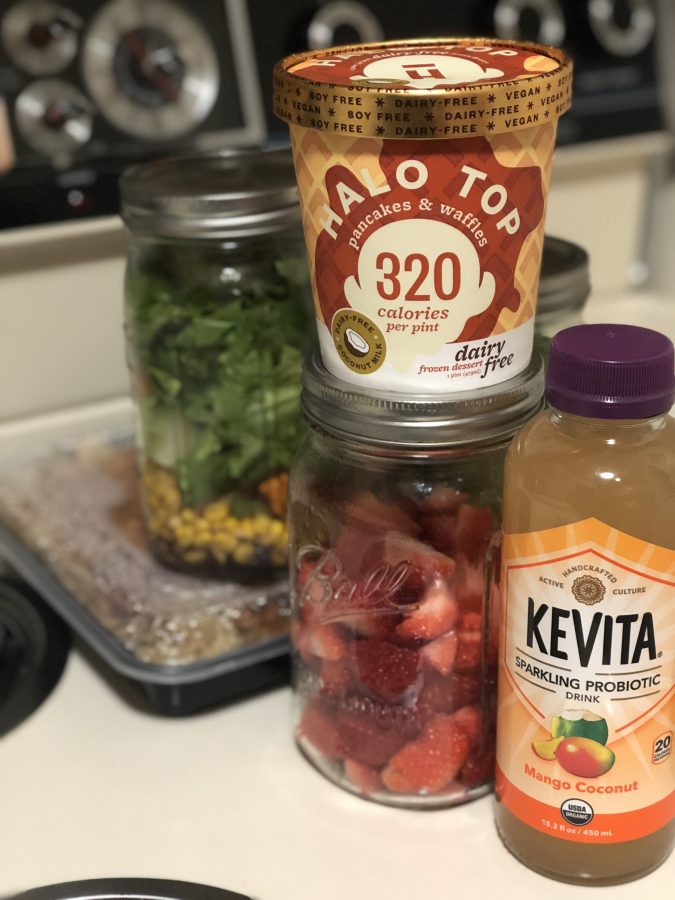I love food. I love cooking, I love trying new recipes and restaurants, I love the sweet, the savory, the mediocre, and the delectable. My love of food is among my best qualities and my worst downfalls. I had written in another article in this series about taking everything in moderation, which may have been advice given that I myself often don’t follow as I should.
Like I said, I love food. This means when I come across something that makes my taste buds sing, it’s hard to say no to a second, or maybe a third, helping. But one thing I have found to not only dramatically decrease the amount of unhealthy food I’m consuming, as well as decrease the amount of money I’m spending on food, is this handy little thing called meal prepping.
As most people know, meal prepping is exactly how it sounds: you’re simply cooking all your meals for the week on one night so that you have good and healthy food prepared, packed, and ready to go. My typical routine consists of spending my Sunday planning what I’d like to eat throughout the week for lunch and dinner, including healthy snacks. I go grocery shopping and scour all the veggies and items on sale. Then, I go home to immediately cook everything I bought, making sure that all of my meals for the week are taken care of so I won’t be tempted to visit the cafeteria.
From here, the path can diverge in quite a few ways.
If you’re looking to simply eat healthier, then there is a plethora of recipes and healthy foods to try for meal prepping. However, if you have any special dietary restrictions or have a particular diet you’d like to try that requires a certain goal of macronutrients, or macros, to hit in a day, then plan out your meals accordingly.
For example, my personal preference is that I consume a small amount of healthy fats, like avocados and salmon, and a large amount of carbs and proteins. For this week’s meals, I tried to plan according to those preferred macros. Breakfast was a protein pancake and a banana. For lunch, I packed Mason Jars full of a chicken taco salad I made with an avocado vinaigrette. Dinner was a turkey bolognese served over protein pasta, with protein bars and sliced strawberries as my snacks. Not only does this all fit in within my macros and health constraints, but it definitely fits my budget.
There is a common misconception that eating healthy is incredibly expensive. Misconception may not be the right word to use because it’s not an entirely false accusation. Yes, if you go to McDonalds, a McChicken or a classic Cheeseburger will only set you back $1, whereas a salad is about $5. However, in the context of a Univeristy of Massachusetts Boston student, I only spend, on average, anywhere between $45 to $60 a week on groceries. That may seem like a lot, but considering my entire grocery list consists of breakfast, lunch, dinner, snacks, protein shakes, and any other thing I might need to survive through a week, I’m saving more money than if I were to just get a small salad every day from the cafeteria.
As previously mentioned, meal prepping is a lot of work. On the plus side, the benefits completely outweigh the risks. Not only am I saving money, but I choose what goes in my body and how it’s prepared. Because I know I’m choosing healthy and whole foods, I stay fuller for a longer period of time.
Something to note, however, is that like many fitness tips, meal prepping might not work for everyone. If that’s the case, please don’t be discouraged! There are plenty of ways to maintain a healthy diet, including healthy meal delivery services or simply watching what you eat when ordering or dining out. In any case, don’t forget to push yourself and keep your eyes on the prize.
Fit Tips: Operation Meal Prep
March 7, 2018
A few Mason jars filled with pre-prepared food and snacks, along with a kombucha drink and almond-milk ice cream.





















































